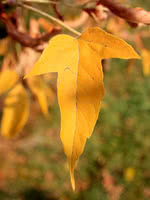Mon-Fri 9am - 5pm Mountain time
Manitoba Maple vs Black Locust
Acer negundo
Robinia pseudoacacia
Manitoba Maple is a fast growing tree with great fall color. These trees are typically grown as feature or shade trees on larger properties and acreages. Manitoba maples are cold hardy and tolerant of a wide range of soil moisture conditions.
Note that Manitoba Maple is considered toxic to horses.
Black Locust is an attractive tree. Its distinctive leaves are made of about a dozen bright green leaflets. It also notable for its fragrant white flowers, which smell of citrus.
Black Locust can grow in many situations, but prefers dry areas with lots of sun. It is robust and is an excellent choice for establishing shade in dry, open areas.
Important note: Much of the Black Locust is toxic to humans and livestock, including seeds, bark, and leaves.
Manitoba Maple Quick Facts
Black Locust Quick Facts
In row spacing: 2.4 - 3 m (8 - 10 ft)

